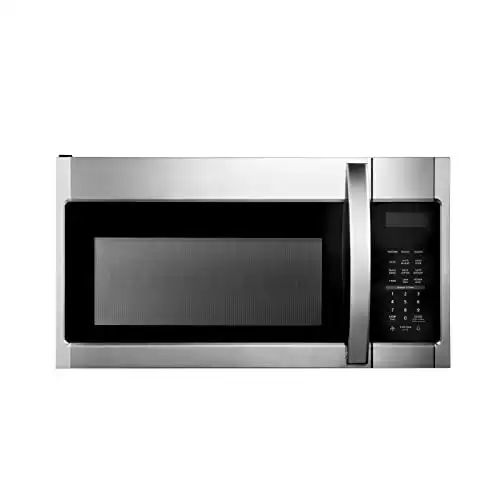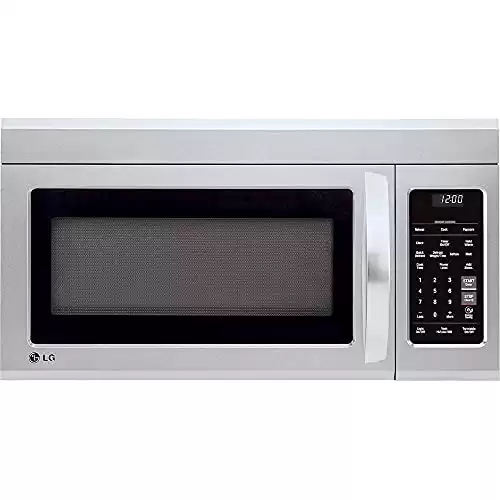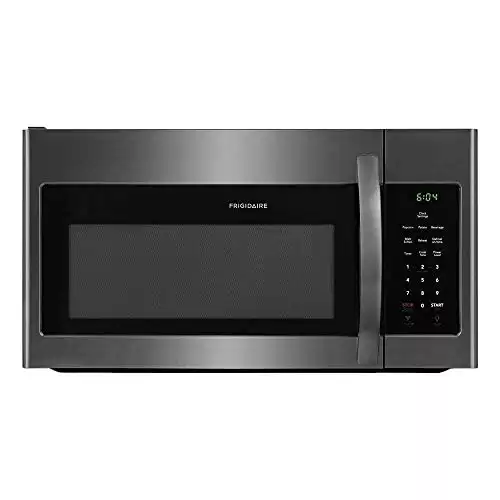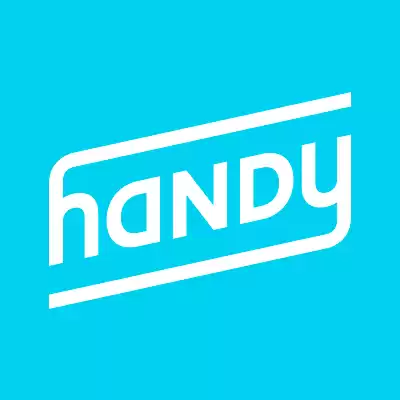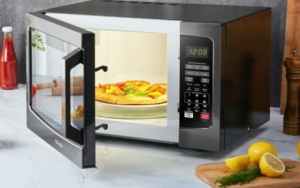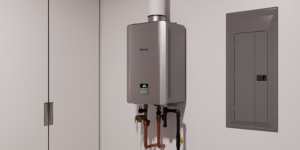Built-In Microwave Replacement: Tips and Top Options
Built-in microwaves are a popular and convenient appliance in many modern kitchens. They save countertop space and offer a streamlined look that blends well with other built-in appliances. Like any appliance, they may need replacing due to malfunctioning, outdated technology, or wear and tear. In this blog post, we’ll discuss the factors to consider when replacing a built-in microwave, our top options, and the steps to follow for a smooth installation.
Factors to Consider For A Built-In Microwave Replacement
Before choosing a new built-in microwave, there are several important factors to consider:
- Size and dimensions of the existing microwave cabinet: Make sure to measure the dimensions of the current microwave space and compare them with the dimensions of the new appliance. If the new microwave is too large or too small, it will not fit properly and may require additional modifications to the cabinet.
- Power requirements and electrical connection: Check the electrical requirements of the new microwave to ensure it is compatible with the existing wiring in your kitchen. Most built-in microwaves require a dedicated circuit and a grounded outlet.
- Compatibility with the kitchen’s aesthetic: Consider the existing kitchen decor and choose a microwave that complements the style and color scheme. Stainless steel and black finishes are popular choices that match many kitchen designs.
- Features and functions needed or desired: Think about the cooking features and functions you use most often and choose a microwave with those features. Some popular features include express cook, sensor cooking, convection cooking, and preset programs.
- Budget considerations: Built-in microwaves vary in price, with basic models costing around $200 and high-end models costing over $1,000. Determine your budget and choose a microwave that fits your needs and price range.
Top Built-In Microwave Replacement Options
Depending on your needs and budget, several excellent built-in microwave options exist. Here are five of our top recommendations:
- GE Profile PEM31SFSS: This compact microwave fits well in most kitchen cabinets and features a stylish stainless steel finish. It also has various features such as express cook, sensor cooking, and defrosting.
- Whirlpool WMH31017HS: This microwave has a large capacity and sleek design that blends seamlessly with most kitchen decor. It also features sensor cooking, ten power levels, and a recessed turntable to help cook your food evenly.
- Panasonic NN-SD975S: If you’re looking for a high-end microwave, the Panasonic NN-SD975S is an excellent choice. It has a spacious 2.2 cubic foot capacity and a sleek stainless steel finish. It also features inverter technology for precise cooking and a range of preset cooking programs for different types of food.
- Bosch HMC80152UC: The Bosch HMC80152UC is a premium option for a convection oven and a microwave. It also features a touch control panel, ten power levels, and a built-in meat probe for precise temperature control.
- LG LMV2031ST: This spacious microwave has a 2.0 cubic foot capacity and an easy-to-clean interior that resists stains and buildup. It also features sensor cooking technology, ten power levels, and a sleek stainless steel finish.
| Product Image | Product Name / Price / Primary Button |
|---|---|
Steps for Replacing a Built-In Microwave Once you’ve chosen a new built-in microwave, follow these steps for a smooth installation:
- Preparation: Turn off the power to the microwave circuit and remove the old microwave from the cabinet. Clean the area thoroughly and make any necessary adjustments to the cabinet.
- Installation: Install the new microwave according to the manufacturer’s instructions. Ensure that it is appropriately secured in the cabinet and make electrical connections. It’s a good idea to have a professional electrician handle the electrical connections if you’re uncomfortable doing it yourself.
- Testing and adjustments: Turn on the power and test the microwave to ensure it’s working correctly. Adjust any settings as needed, and make sure the turntable rotates appropriately.
Here are ten frequently asked questions about built-in microwaves:
- What is a built-in microwave, and how is it different from a countertop microwave?
A built-in microwave is installed into a cabinet or wall space and is designed to blend in with the surrounding cabinetry. A countertop microwave, on the other hand, sits on a countertop and is not built into the kitchen.
- Can any microwave be installed as a built-in microwave?
No, not every microwave can be installed as a built-in microwave. Built-in microwaves have specific ventilation requirements that are different from countertop microwaves. It is essential to check the manufacturer’s specifications before purchasing a microwave to ensure it can be installed as a built-in.
- What are the dimensions I need to consider when choosing a built-in microwave?
The dimensions you need to consider when choosing a built-in microwave include the microwave’s height, width, and depth and the cabinet space where it will be installed.
- What is the difference between a built-in microwave and a microwave oven combination?
A built-in microwave is a standalone appliance designed for quick reheating and cooking. A microwave oven combination, on the other hand, combines a microwave with a conventional oven, allowing you to use both appliances for cooking and baking.
- How do I install a built-in microwave?
The installation process for a built-in microwave can vary depending on the make and model of the appliance. It is essential to follow the manufacturer’s instructions carefully and consider hiring a professional electrician to handle the electrical connections.
- Can I replace my old built-in microwave with a new one without modifying the cabinet?
In most cases, yes, you can replace your old built-in microwave with a new one without modifying the cabinet as long as the dimensions of the new microwave are the same or similar to the old one.
- Do built-in microwaves require ventilation?
Yes, built-in microwaves require proper ventilation to prevent overheating and damage to the appliance. Most microwaves come with built-in ventilation systems or require an external ventilation system.
- What are some features to look for when choosing a built-in microwave?
Some features to look for when choosing a built-in microwave include the size and capacity of the microwave, cooking power, cooking modes, and additional features like defrosting, sensor cooking, and convection cooking.
- How do I clean and maintain my built-in microwave?
Wipe down the interior and exterior surfaces regularly with a damp cloth to clean and maintain your built-in microwave. You can also use a mild cleaning solution to remove stubborn stains. It is also essential to regularly clean the microwave’s ventilation system to prevent buildup.
- How long do built-in microwaves typically last?
The lifespan of a built-in microwave can vary depending on the make and model of the appliance, usage frequency, and maintenance. However, on average, built-in microwaves can last 5 to 10 years or longer with proper care and maintenance.
Summary: Built-In Microwave Replacement
Replacing a built-in microwave can seem daunting, but with careful consideration and the right choice of replacement, it can be a smooth and straightforward process. When choosing a new built-in microwave, consider the size and dimensions of the cabinet, power requirements, compatibility with your kitchen’s aesthetic, desired features and functions, and budget.
Good luck with your project!





